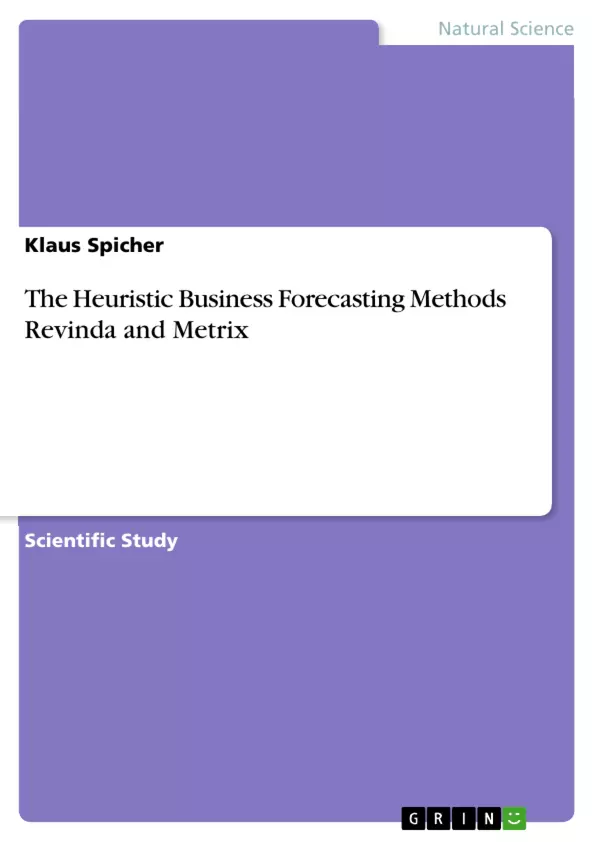The work describes two new heuristic approaches to time series analysis and forecasting for business purposes. Both approaches avoid any assumptions according to assumed process attributes behind the data (stochastic process, stationarity, normal distribution of random noise). Those methods engineer data of any kind of business processes. Only unidentified (inherent) process structures are used for forecasting.
Speed represents the drive of current business development. IT is about allowing automatic self-synchronizing (production) processes. Big Data potentially offers the identification of hidden structures. In many companies mobile information access is being used. Multi-Channel B2C, B2B and M2M are gaining the managerial pole position. But nevertheless the quality of data is the key for producing excellent results. It is important that planning is based on as realistic data as possible. After roughly more than 35 years Business Forecasting is back in the focus.
Inhaltsverzeichnis (Table of Contents)
- Introduction.
- Brief Forecast-Methodology Overview
- Business Forecasting.
- Comments on Forecast Accuracy.
- New Methods supporting Business Forecasting.
- Business Process Forecasting - The REVINDA-MM-Approach...
- "ERP-Type"- Forecasting METRIX Approach.......
- Conclusions:...
- Literature:.
Zielsetzung und Themenschwerpunkte (Objectives and Key Themes)
The report aims to introduce two novel heuristic approaches for time series analysis and forecasting in business contexts. These methods are designed to avoid assumptions regarding the underlying process of the data, focusing instead on identifying and utilizing inherent structures within the data itself.
- Model-free forecasting methods
- Business process forecasting
- ERP-type forecasting
- Forecast accuracy
- Time series analysis
Zusammenfassung der Kapitel (Chapter Summaries)
- Introduction: This chapter sets the stage by highlighting the importance of speed and data quality in modern business. It establishes the context of Business Forecasting as a crucial tool for planning and decision-making. The chapter also briefly discusses the historical development of forecasting methods and the relevance of "Industrie 4.0" in the context of data-driven business processes.
- Brief Forecast-Methodology Overview: This section presents a comprehensive overview of common forecasting methods, including both traditional approaches and more recent techniques. It provides a foundation for understanding the existing landscape of forecasting methodologies.
- Business Forecasting: This chapter focuses on the specific application of forecasting in business contexts, dividing the topic into two key categories: Business Process Forecasting (MM-Forecast) and "ERP-Type" Forecasting. The chapter delves into the complexities and nuances of each approach, offering real-world examples to illustrate the practical application of these methods.
- Comments on Forecast Accuracy: This chapter explores the issue of forecast accuracy, emphasizing the importance of short-term forecasting for operational decision-making. It discusses the limitations of traditional error measures and introduces the concept of a "Structural Tracking Band" for evaluating forecast performance.
Schlüsselwörter (Keywords)
This report focuses on the key concepts of time series analysis, business forecasting, and model-free forecasting methods. It explores the development and application of new approaches like the REVINDA-MM-Approach and the METRIX Approach, emphasizing the importance of data-driven decision-making in contemporary business environments. The paper also investigates the challenges and opportunities associated with achieving accurate forecasts in the context of complex business processes.
- Citar trabajo
- Klaus Spicher (Autor), 2015, The Heuristic Business Forecasting Methods Revinda and Metrix, Múnich, GRIN Verlag, https://www.grin.com/document/542856



